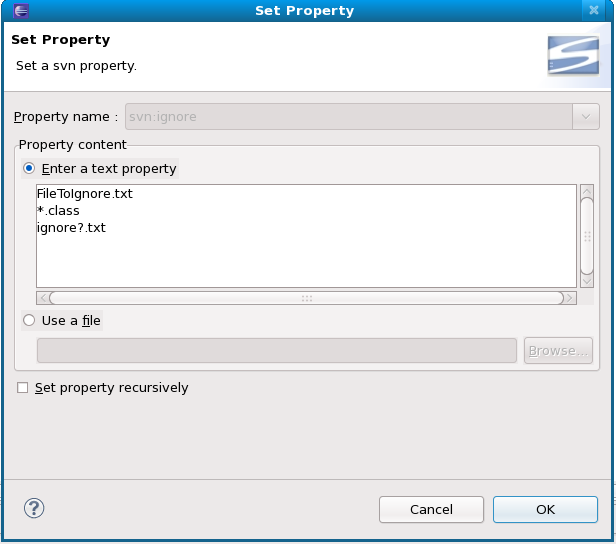


When dictionaries for different languages are registered, SmartSVN automatically detects and uses the best matching language, so you don't have to switch between languages manually.

SmartSVN can spell-check your commit messages using Open Office or Mozilla dictionaries. Use this compare view to review your changes in order to write an appropriate commit message or to deselect unrelated files from the commit. When entering the commit message, you can activate a seamlessly integrated compare view. You don't have to select the external's root directory like in other SVN clients. SmartSVN allows committing changes to externals (nested working copies), giving you the choice between providing one commit message for all affected repositories and providing individual commit messages for each. It is all up to you.SmartSVN (optionally) suggests adding new or removing missing files, and is capable of detecting moved and renamed files. vim? You can't does terminal? Try kwrite, gedit or geany. If you see an empty line, this means you haven't defined one. You can check if you have a selected an editor to be used by default by $ echo $EDITOR Voila! Now all you need to do is to commit changes. Just like in the file method I mentioned previously, you can add one file or folder to be ignored per line.
Svn propedit ignore multiple directories how to#
This will open your favorite editor (you don't have one? i'll explain how to adopt one soon) listing the files and folders to be ignored by svn. The first one is to use svn propset with a text file containing a list of files to be ignored: svn propset svn:ignore -F ignore.txt. Working clean is better, if you agree, follow me. I don't recommend this method because this will make you have one unnecessary file (the text file in which you list files/folders to ignore). Assuming this file's name is ignoreme, the command you need is: $ svn propset svn:ignore -F ignoreme. You have two alternative methods, i recommend the latter one: File MethodĬreate a text file containing one file/folder to be ignored per line. This is basics, even a 8 years old girl can setup her svn repository to ignore some files.īut what if you want to make svn ignore multiple files or folders? Now you need a real competent, knowing what to do type system administrator 8-) Just kidding, all you need to fiddle around for some time. When found on a versioned directory, the svn:ignore property is expected to contain a list of newline-delimited file patterns which Subversion should use to. Is the standard command when you want to make svn ignore some files. Until then, you know, talk is cheap, here's the code: Typically I’ll manage this via an IDE plugin like subclipse (in Eclipse), but if you want to do it via the terminal instead (bash)here’s how.

I am planning to write a lengthy post about usage areas of this feature if I have enough time. Editing svn:ignore on the terminal svn:ignore is a great way to exclude certain files or folders from being added to your subversion repository. Making svn ignore some specific files will enable you not to commit the files you choose. For more information about Subversion, you can visit's here. Subversion (SVN) is a version controlling system, for those who are not familiar with I need to say.


 0 kommentar(er)
0 kommentar(er)
